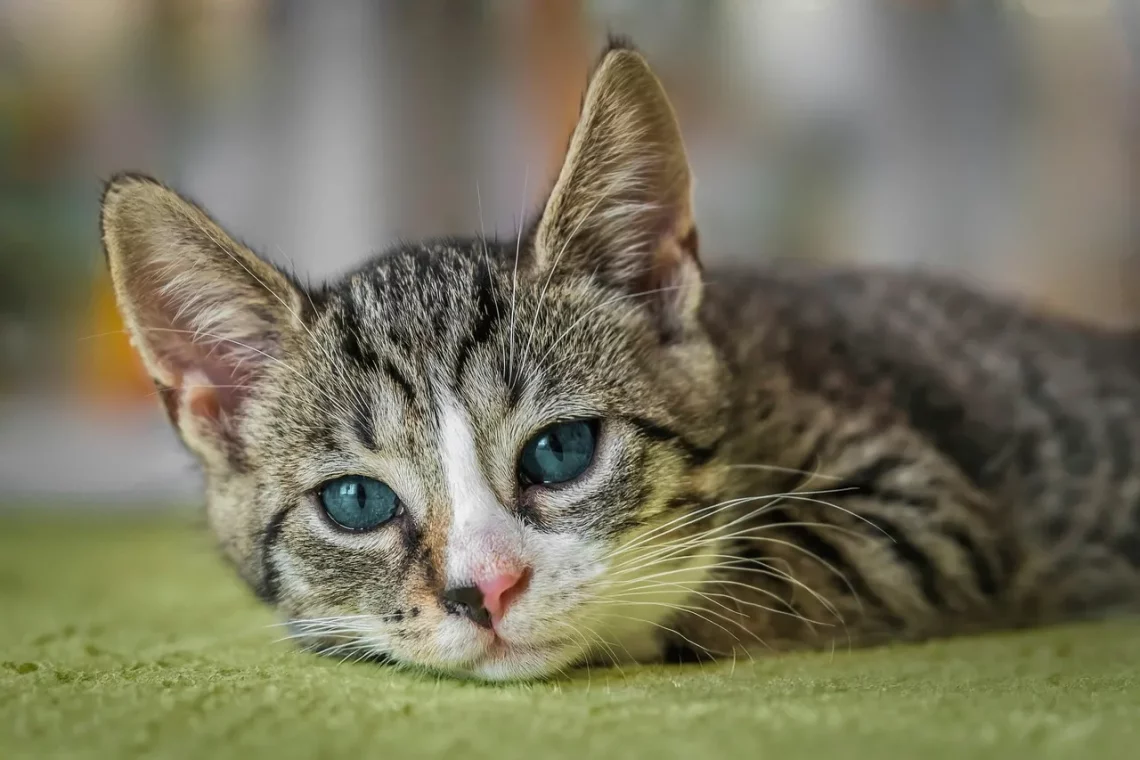
How to Tell if Your Cats Are Bonded: Signs of Feline Friendship
Cats are known for their independent nature, yet many feline companions form deep bonds with one another. Observing the interactions between your cats can be a fascinating experience, as they often communicate in ways that may not be immediately obvious to us humans. Understanding the signs of their friendship can deepen your appreciation for their unique social behaviors and enhance your relationship with them.
Cats, like many animals, thrive on social interaction, and when they feel comfortable with each other, they exhibit a variety of behaviors that signify a strong bond. These signs can manifest in numerous ways, from physical closeness to playful antics. It’s important to recognize these behaviors not only to ensure a harmonious living environment but also to celebrate the beautiful connections that can exist between our feline friends. Each cat has its personality, and observing their interactions can provide insights into how they feel about each other.
In the following sections, we will delve deeper into the specific signs that indicate your cats are bonded. By understanding these behaviors, you can take steps to nurture their relationship, ensuring both cats feel secure and loved in your home.
Physical Affection: The Language of Cats
One of the most evident signs of a strong bond between cats is physical affection. Cats often express their feelings through body language and touch. When two cats are bonded, you may observe them grooming each other, a behavior known as allogrooming. This is not just a practical act of cleanliness; it also serves to strengthen their social connection. When one cat licks another, it releases endorphins that create feelings of comfort and security for both animals.
Additionally, bonded cats tend to sleep close to one another. You might find them curled up together in a cozy spot, sharing warmth and companionship. This behavior indicates trust and safety, as cats are vulnerable when they are sleeping. If your cats frequently choose to nap together, it’s a positive sign of their bond.
Another manifestation of physical affection is when cats engage in slow blinking. If you notice one cat looking at another and slowly closing its eyes, it’s a gesture of trust and affection, sometimes referred to as a “cat kiss.” The recipient of this slow blink may respond similarly, which further reinforces their bond.
Moreover, bonded cats often display behaviors like rubbing against each other or leaning into one another. This physical contact is a way for them to mark each other with their scent, reinforcing their social connection and creating a sense of belonging. If you see your cats engaging in these affectionate behaviors, you can be confident that they share a strong bond.
Playful Interactions: A Shared Joy
Play is a critical component of feline behavior, and it plays a significant role in how cats develop relationships with one another. When cats are bonded, their play is not just about exercise; it is an essential avenue for social interaction. You may notice your cats engaging in playful chases, pouncing on each other, or sharing toys. This playful behavior is a clear indicator of a healthy relationship, as it demonstrates that they feel comfortable enough to engage in such activities.
Bonded cats often take turns during play, showing a level of cooperation and understanding. For instance, one cat might initiate a game of chase, and the other will happily join in, often switching roles. This reciprocal play helps to build trust and strengthens their bond. Cats that are not well-acquainted may not engage in this kind of interaction, as they need to establish a level of comfort first.
Furthermore, you might observe synchronized play behaviors, where both cats seem to be in sync with each other’s movements. This level of coordination often indicates a strong bond, as they are attuned to each other’s actions and reactions.
Additionally, vocalizations during play can be another sign of bonding. Cats often make playful sounds, such as chirps or trills, while engaging with one another. These sounds are a form of communication that signifies excitement and enjoyment, further showcasing their friendly relationship. If your cats engage in playful interactions regularly, it’s a strong indicator that they are bonded and enjoy each other’s company.
Shared Spaces: The Comfort of Togetherness
Another significant sign of a bonded relationship between cats is their tendency to share spaces. Cats are territorial creatures, yet when they feel secure in their relationship, they often disregard personal space. You might find your cats lounging in the same sunbeam, curled up on the same bed, or even sharing a favorite perch by the window. This behavior signifies a level of comfort and acceptance that indicates a bond.
When cats are bonded, they often feel no need to assert dominance over each other in shared spaces. Instead, they coexist peacefully, allowing each other to enjoy the same areas without conflict. This is particularly evident during feeding time, where bonded cats may eat side by side without showing signs of aggression or competition.
Moreover, sharing spaces is not limited to resting areas; it extends to play areas and hiding spots as well. You may notice that bonded cats will often explore new environments together, showing curiosity and support for one another. This shared exploration can strengthen their bond, as they face new experiences together.
Additionally, it’s essential to consider the emotional aspect of shared spaces. When a cat feels anxious or scared, having a bonded companion nearby can provide comfort and reassurance. You might observe one cat seeking out the other during stressful situations, such as loud noises or unfamiliar visitors. This behavior highlights the emotional connection they share, as they rely on each other for comfort and security.
Communication Styles: Understanding Feline Conversations
Cats communicate in various ways, and understanding their communication styles can provide valuable insights into their relationships with one another. When two cats are bonded, their communication tends to be more nuanced and affectionate. You may notice that they engage in softer vocalizations, like purring or gentle chirps, indicating a relaxed and happy state.
Additionally, body language plays a crucial role in feline communication. Bonded cats often mirror each other’s postures and movements, indicating a strong social connection. For instance, if one cat sits upright and alert, the other may do the same, showcasing their attunement to each other. This mirroring behavior is a sign of empathy and understanding, further solidifying their bond.
Another aspect of their communication is the use of scent marking. Cats have scent glands in various parts of their bodies, and they often rub their faces against each other or objects in their environment. This action is a way of sharing their scent, which can create a sense of familiarity and comfort. When cats are bonded, they frequently engage in this behavior, reinforcing their connection and establishing a shared territory.
Moreover, the way cats respond to each other’s vocalizations can also indicate a bond. For instance, if one cat meows, and the other responds with a similar sound or a head tilt, it shows that they are engaged in a form of conversation. This interaction indicates that they are not just cohabitating but also actively communicating and understanding one another.
In conclusion, recognizing the signs of bonding in your cats can enhance your understanding of their relationship and provide insights into their emotional well-being. Observing their physical affection, playful interactions, shared spaces, and communication styles can help you foster a loving environment for both your feline friends.
**Disclaimer:** This article is not intended as medical advice. For any health concerns regarding your pets, please consult a qualified veterinarian.




